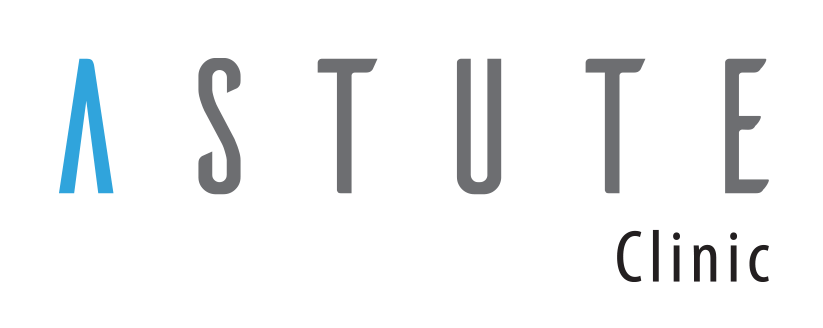Deciding between HA dermal fillers and collagen biostimulators

According to the American Society of Plastic Surgeons (ASPS), hyaluronic acid (HA) dermal filler and collagen stimulating injectables have become increasingly popular in recent years, with over 7.3 million HA filler treatments, and 290,000 collagen stimulator treatments performed globally in 2021 (1). This is in line with the increasing demand for aesthetic medicine procedures, owing largely to an ageing population and considerable focus on personal grooming.
However, not many are aware of the differences between dermal fillers and collagen biostimulators. While they are both injectables, their content, mechanism of action, and manner in which they are applied differ. Medical director and founder of Astute Clinic, Dr Jason Yip, shares his insight with us.
HA Fillers
Hyaluronic acid (HA) is a naturally occurring compound in the body, with the highest concentrations found in the joints, eyes, and skin. Injectable hyaluronic acid (HA) is a type of temporary dermal filler, used primarily to replace volume, augment facial features, and hydrate the skin.
“Injectable HA dermal fillers come in varying viscosities to produce different effects. Less viscous fillers are used for to improve the skin’s hydration, while more viscous ones are used to lift the skin, replace volume, and fill folds in the mid-face, as well as augment facial features like the nose bridge, chin and lips,” explains Dr Yip.
The outcome of the treatment will vary from patient to patient depending on factors such as the location of the injection, individual properties of the filler, age of the patient and quality of their skin.
Collagen biostimulators
Collagen-stimulating injections or collagen biostimulators, on the other hand, are designed to stimulate the body’s own natural collagen production, which tends to diminish with age.
Studies show that from the age of 20, our collagen production declines by about 1% to 1.5% a year, which means that our skin would lose about 20% of its total collagen when we turn 40 (2). On top of that, women lose 30% more collagen in the first five years of menopause alone (3).
“As collagen is the primary building block for the skin, bones and connective tissues, the loss of collagen leads to skin that is thinner, more fragile, dull, dry, and more prone to wrinkles. This is where collagen-stimulating injections like GOURI can help, as they can replenish the ‘collagen bank’ in your skin,” says Dr Yip.
What is GOURI?
GOURI is the latest evolution in collagen-stimulating treatments which has been developed to rejuvenate the face, so it appears more lifted and radiant (4). Developed by Dexlevo Inc Korea, GOURI is the first and only liquid polycaprolactone (PCL) collagen stimulator in the market using Dexlevo’s patented technology known as Collagenesis-Enabled Solubilised Active and Biodegrable Polymer (CESABP).
“GOURI features 21% PCL and is the first fully liquefied injectable collagen stimulator manufactured with the CESABP technology. Because of the product’s specific viscosity, it is able to spread evenly across the face, without the use of microparticles, which reduces the risk of complications such as lumps or nodules (4) after injection,” explains Dr Yip.
GOURI has been approved by Conformité Européene (CE) as a medical device and has undergone the North American Science Associates (NAMSA) safety testing (5).
Fillers or collagen stimulators, which is right for you?
Although both HA dermal fillers and collagen biostimulators are used to rejuvenate the face, their outcomes and results vary.
“HA filler treatments offer immediately noticeable outcomes that can last between six to 24 months, depending on the product’s viscosity. Generally speaking, the more viscous the HA filler, the longer the body would take to metabolise it, and the longer it lasts.”
“Collagen biostimulators like GOURI however, take about two to four weeks to deliver optimal results, with outcomes lasting up to a year or more. The reason they take longer is because collagen regrowth is a gradual process. The results also tend to be longer-lasting,” says Dr Yip.
However, he clarifies that there is no one-size-fits-all solution when it comes to aesthetic treatments.
“Different treatments are designed for different purposes, and administered according to each patient’s unique needs and wants. Typically, if patients want to enhance or augment facial features, such as the lips, nose bridge or chin, I’d recommend HA fillers. If, on the other hand, the patient is looking for a natural lift and rejuvenation of the entire face, a collagen biostimulator like GOURI would be a better choice.
“Either way, it’s important to consult a qualified aesthetic physician before starting on any treatment, so that we can properly assess your face and determine what type of treatment is right for you,” advises Dr Yip.
To avoid complications that could arise from using counterfeit products, always check for the holographic authenticity sticker and scan the QR code on GOURI’s product’s packaging.
-End-
References:
1) https://www.isaps.org/media/vdpdanke/isaps-global-survey_2021.pdf
3) https://www.aad.org/public/everyday-care/skin-care-secrets/anti-aging/skin-care-during-menopause#
4) https://gorgeousgouri.com/why_gouri



Post a comment